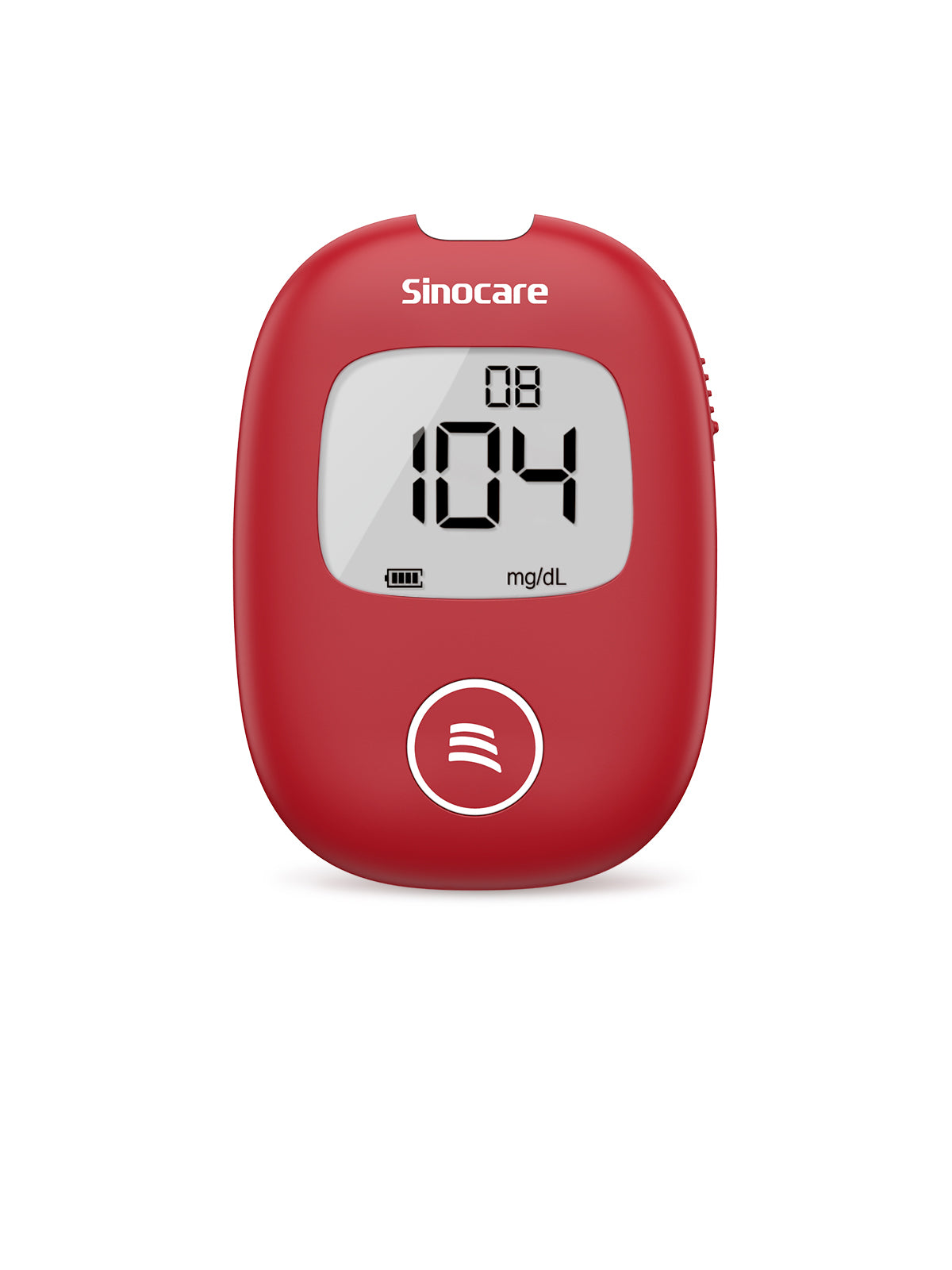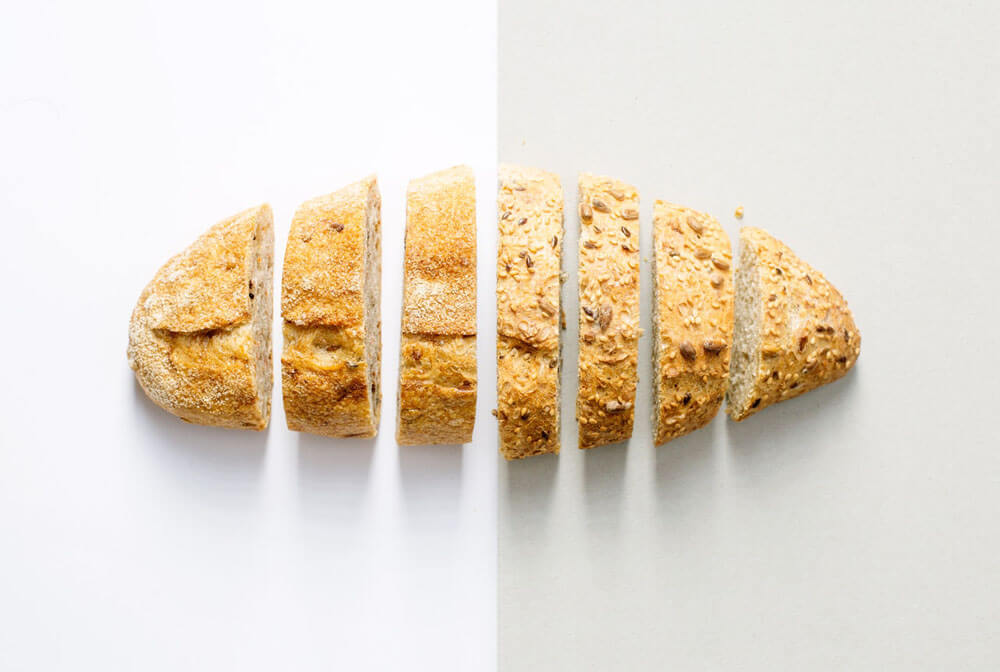Bread has been a form of staple food that is widely consumed by many cultures worldwide for many years. However, people living with diabetes are often told to avoid eating bread as it generally consists of a large proportion of carbohydrates.
Can people living with diabetes consumed bread?
People living with diabetes can consume bread as long as they are aware of the type and ingredients of the bread, it is important to consider the glycaemic index and the number of carbohydrates in the bread itself.
What is Glycaemic Index (GI) and how does it affect me?
The glycaemic index is a rating that is used to inform us how quickly our blood sugar rises after consuming food containing carbohydrates. It runs on a scale of 0 to 100, where pure glucose has a rating of 100 as a reference [1]. Food that does not contain carbohydrates such as meat, fat, and protein does not have a GI score.

Figure 1: The difference between high and low GI food on your blood sugar levels [2]
High GI diet caused a rapid rise in blood sugar shortly after consuming the particular food when compared to a low GI diet:
- Low GI food generally has a rating of less than 55
- Moderate GI food has a rating of 56 – 69
- High GI food has a rating of 70 and above
What is in a Bread?
Bread is generally made from flour, yeast, salt and water.
The type of flour used will help to determine if the bread has a higher or lower GI index.
Is Eating Bread Good for Diabetes?
People living with diabetes should continue to consume bread in small to moderate amounts as bread tend to be rich in calcium, fibre, protein, iron, vitamins and other minerals. It is also low in calories and fat. However, having bread that is made from whole grains is healthier. Examples of whole grain bread are wholemeal, whole grain and granary bread.
What is the whole grain?

Figure 2: Whole grain vs Refined Grain [3]
A whole-grain consists of all 3 parts of the grain, the bran, germ and endosperm.
The bran is the outer layer which is rich in fibre which tends to slow the breakdown of starch to sugar, leading to steady blood sugar and hence a lower GI rating. Fibre also helps to reduce total cholesterol, blood pressure and reduce inflammation in your gut and improve constipation [4].
The bran also supplies other nutrients such as vitamins B, iron, copper, zinc, magnesium, antioxidants and phytochemicals, which play a role in disease prevention [3].
The germ is the inner part of the grain where it is packed with nutrients such as vitamin B, vitamin E, phytochemicals and healthy fats [3].
The endosperm is the centre part of the grain where it is packed with starchy carbohydrates [3].
The bran and the germ are removed during the milling process, leaving the endosperm to make a white flour [4].
Which type of bread is recommended for people with diabetes?
Granary / Malted Wheat Bread
Granary bread is a type of bread that contains malted wheat flakes and may or may not be made from wholegrain flour. Granary bread has a GI of 52 [5], making it a healthier option when compared to white bread.
Seeded Bread
Seeded bread can be made from either white or whole meal flour with added seeds. It has a GI rating of between 50-58 [5], making it a healthy alternative to white bread.
Wholemeal / Wholegrain bread
Wholegrain bread generally has a GI rating of around 59 as it consists of all 3 parts of the grain which leads to a slower release of carbohydrates, and hence a slower rise in blood sugar.
Rye Bread
Rye bread is made from rye flour instead of wheat, and they tend to have a sour, nutty taste to it. Most commercially made rye bread is made with a mixture of wheat and rye flour. Rye bread has a GI rating between 45- 55 [5], depending on how they are made.
Malt Loaf
Malt loaf is a sweet bread made with malt extract and often contains raisins in it, and hence has provides a good source of fibre, This leads to a lower GI rating of 59 [5].
White bread
White bread is widely available and is generally cheaper compared to other types of bread. It has a GI index of approximately 71 which is high [1], and hence people living with diabetes are generally advised to avoid eating bread.
However, white bread is generally consumed with other food and eating low GI food with white bread can lower the GI index and reduce the breakdown of carbohydrates. For example, white bread with avocado will result in a lower GI index as avocado consists of healthy fat and fibre which will lower the GI index. Strawberry jam which has a high GI rating on its own can lead to a rapid rise in blood sugar when eaten with white bread.
FAQ
How to read nutritional labels on bread?
Now that we have gone through the GI index and type of bread, how do we apply this knowledge when we go food shopping?
First of all, we need to be able to read and understand the nutrition information that is provided in the food label. It is unlikely that a GI rating will be provided.
This is an example of a bread that we regularly consumed:
| Typical Values | Per 100g | Per Slice 47g | % RI |
|---|---|---|---|
| Energy | 1171 kJ 278 kcal |
550 kJ 131 kcal |
7% |
| Fat of which saturates |
6.6g 0.6g |
3.1g 0.3g |
4% 1% |
| Carbohydrates of which sugars |
42.0g 3.8g |
19.7g 1.8g |
8% 2% |
| Fibre | 5.3g | 2.5g | / |
| Protein | 10.0 g | 4.7 | 9% |
| Salt | 0.88g | 0.41g | 7% |
* Reference Intake (RI) of an average adult (8400 kJ/ 2000kcal)
Figure 3 : Nutritional Information for Hovis Seed Sensations.
Looking at this label, this is generally a fairly healthy bread as it contains a fairly good amount of fibre and is fairly low in calories. The fat content is slightly higher when compared to wholemeal bread as it contains seeds which are a great source of healthy fat.
It is made with wheat flour instead of wholemeal, but overall seeded bread tends to have the same lower GI rating as wholemeal bread due to the addition of fat and fibre from the seeds.
Bread / Ingredients to avoid for diabetes
Bread that is made from white flour such as white bread should be eaten in moderation or consumed with a low GI topping, such as eggs or avocados rather than with jam.
Enjoying bread when living with diabetes
As bread remains a vital part of our diet, it is difficult to eliminate bread completely. Hence, I would suggest that people living with diabetes can continue to consume bread in small to moderate amount.
One of the suggestions that I tend to give to people living with diabetes is to eat their bread with low to no carbohydrate topping such as peanut butter, avocado, or egg on toast.
For sandwiches, I would generally advise that people have open sandwiches with lots of proteins and healthy fat.
Final thoughts
People living with diabetes should continue to be mindful of their dietary habits, but they should also be allowed to continue to enjoy the food that is around them. It might take some time for people to adjust to a different type of bread that they usually enjoy, but they might also find that the lower GI bread can have much more nutritional benefits.
If you are still struggling to find a low GI bread that you enjoy, then I would suggest eating smaller amounts of bread or having white bread with a lower GI topping. In the end, you have to enjoy what you are eating to make the switch in the long term.
References:
1. May, B. (2018, August 29). Bread and diabetes: Nutrition and options. Medical News Today. Retrieved June 13, 2022, from https://www.medicalnewstoday.com/articles/311036#improving-the-glycemic-index-of-bread
2. British Dietetic Association. (n.d.). Glycaemic Index Food fact sheet. Glycaemic Index Food Fact Sheet | British Dietetic Association (BDA). Retrieved June 13, 2022, from https://www.bda.uk.com/resource/glycaemic-index.html
3. Harvard T.H Chan School of Public Health. (2019, November 4). Whole grains. The Nutrition Source. Retrieved June 13, 2022, from https://www.hsph.harvard.edu/nutritionsource/what-should-you-eat/whole-grains/
4. British Dietetic Association. (n.d.). Fibre. Fibre | British Dietetic Association (BDA). Retrieved June 13, 2022, from https://www.bda.uk.com/resource/fibre.html
5. University of Sydney. (n.d.). GI search. Glycemic Index. Retrieved June 13, 2022, from https://glycemicindex.com/gi-search/
6. Seed Sensations® Original. (2022). Retrieved 13 June 2022, from https://www.hovis.co.uk/seeded-bread/seed-sensations-original










Leave a comment
All comments are moderated before being published.
This site is protected by hCaptcha and the hCaptcha Privacy Policy and Terms of Service apply.